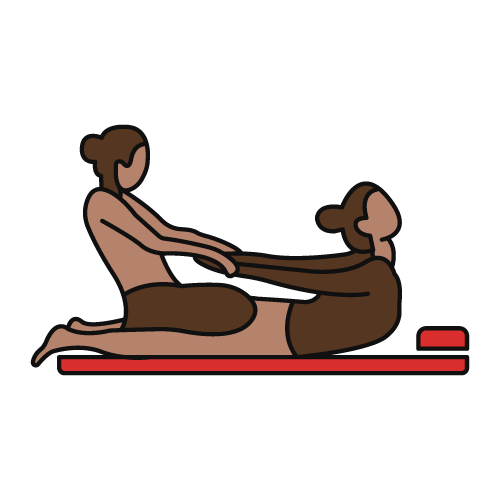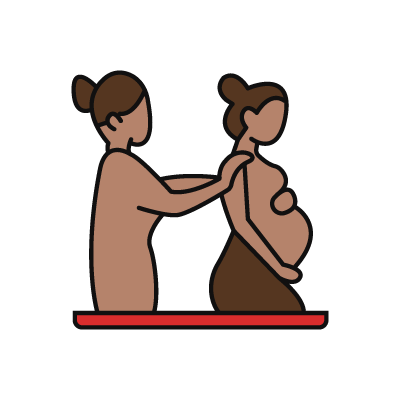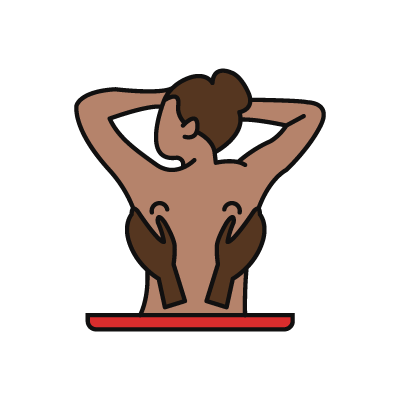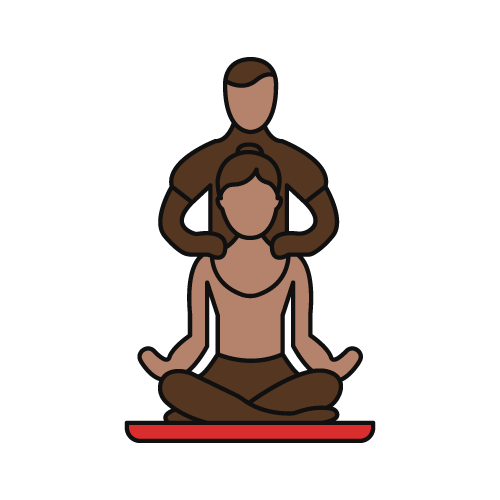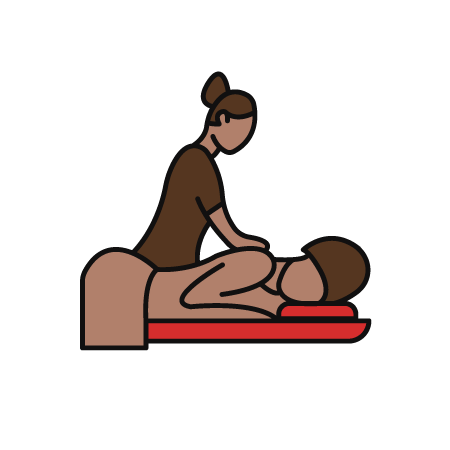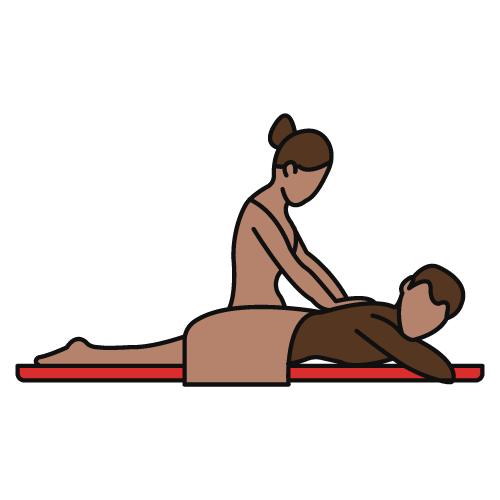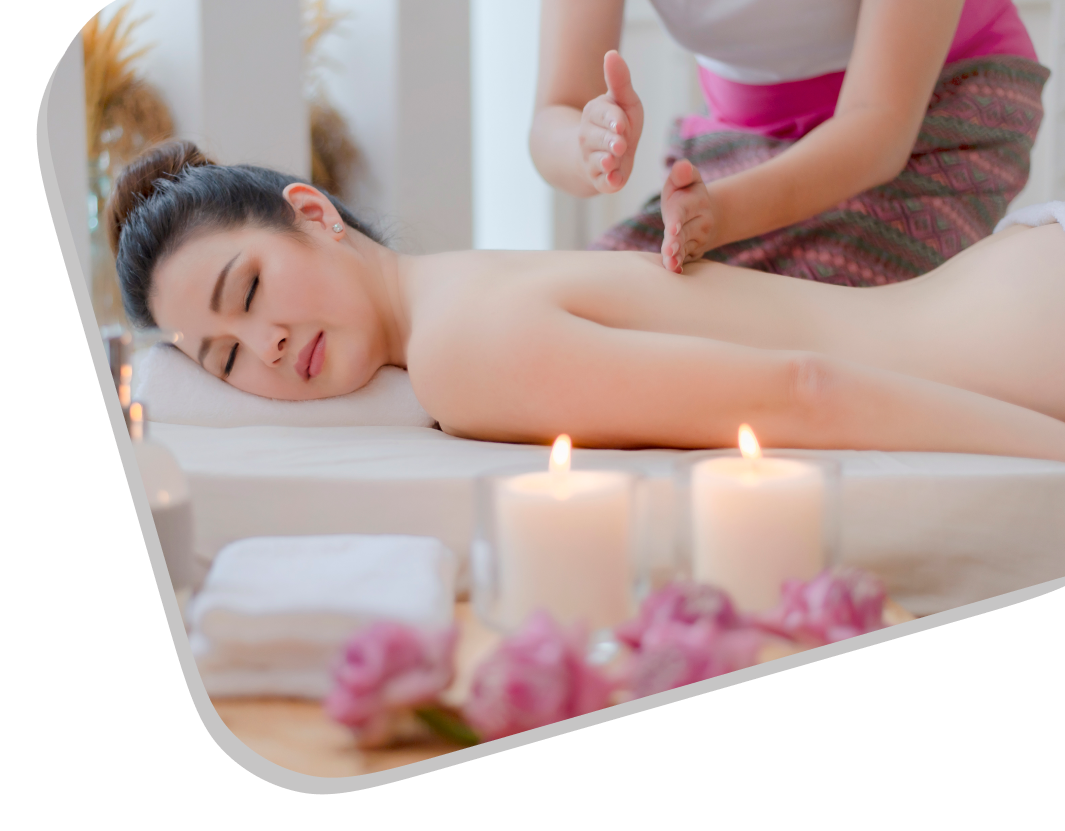
Escape The Grip of Chronic Tension and Pain for Lasting Relief.
Claim your day with a rejuvenating massage for your back, head, and shoulders. Starting from only £65.
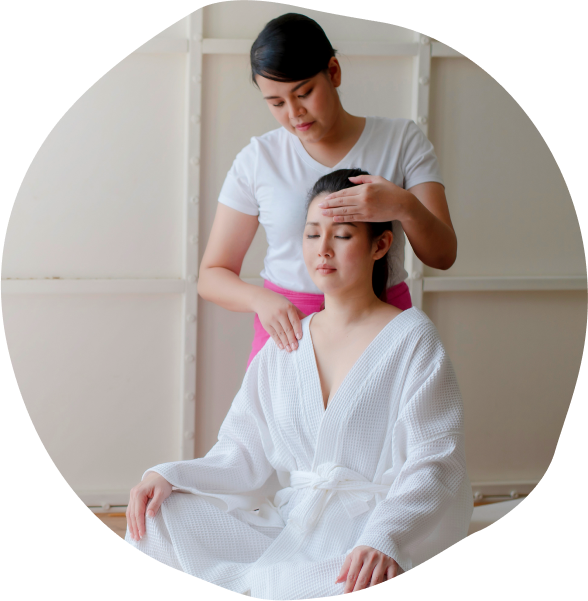
The Benefits of Back and Shoulder Massage
Popular Massage Treatments
Specialised care for your back and shoulder tension release.
FAQs
More info on Back & Shoulder Massage
The answer to this question depends on various circumstances, including the sort of shoulder massage you receive, the massage therapist’s experience, and the length of time available. A traditional shoulder massage may last 45 minutes to an hour.
Finally, if you have limited time, the therapist would most likely adjust the massage to that time.
The frequency of shoulder massages depends on your needs and preferences; however, persistent shoulder pain may require more frequent massages (once a week or every other week), while infrequent pain may only need massages once a month.
Furthermore, during a back massage, a therapist uses massage oil to reduce friction and applies techniques such as kneading, rubbing, and pressing with their hands, elbows, or forearms to soothe back muscles and soft tissues, promoting relaxation, reducing stress, and potentially relieving discomfort and pain.
Head and shoulder massages are generally a relaxing and soothing experience and should not cause pain or discomfort. Nevertheless, if you have particularly sensitive areas or muscle knots, you may experience some discomfort during the massage.
Yes, a head-and-shoulders massage can help relieve headaches and migraines.
- It releases muscle tension.
- It improves blood circulation and enhances blood flow.
- It helps eliminate toxins from the body.
These factors contribute to a sense of calm and well-being.
Swedish massage, deep tissue massage, and trigger point treatment are highlighted as effective therapies that target specific areas of muscle tension. This makes it particularly suitable for addressing shoulder pain and promoting stress relief,
Here’s what you can expect from a back and shoulder massage:
- Consultation: The session will begin with a consultation during which you will discuss any special requirements or areas of focus you may have.
- Draping and undressing: You will be invited to undress to your comfort level and lie face down on the massage table. A sheet or towel will be put over your back and shoulders, exposing only the region being operated on.
- Warm-up: Our therapist will begin by applying gentle pressure to the muscles to warm them up.
- Deep tissue work: The therapist will use various techniques to target the back and shoulder muscles, relieving tension and promoting relaxation.
- Stretching: The therapist may also include stretching exercises to help relieve muscle tension.
- Closing: The session will conclude with a brief rest period and a recommendation for follow-up appointments. A back and shoulder massage should be pleasant and tension-relieving, leaving you feeling renewed and invigorated.
Head and shoulder massages work through physical manipulations and psychological effects. The physical manipulations involve applying pressure, kneading, and rubbing the soft tissues of the neck, shoulders, and scalp. This can help to loosen and stretch muscle fibres, improve circulation, and release muscle tension and knots. It can also stimulate the release of endorphins, natural painkillers that promote relaxation and well-being. The psychological effects of a head and shoulder massage include reducing stress and anxiety levels, improving mental clarity and concentration, and promoting better sleep. The gentle pressure applied during the massage also helps stimulate nerve endings in the scalp, increasing blood flow to the brain and promoting a sense of calm and relaxation.
Back massages are not inherently painful, but experiences vary. Some find them relaxing, but others may find them unbearable. Communicating with the therapist can help adjust techniques for comfort.
